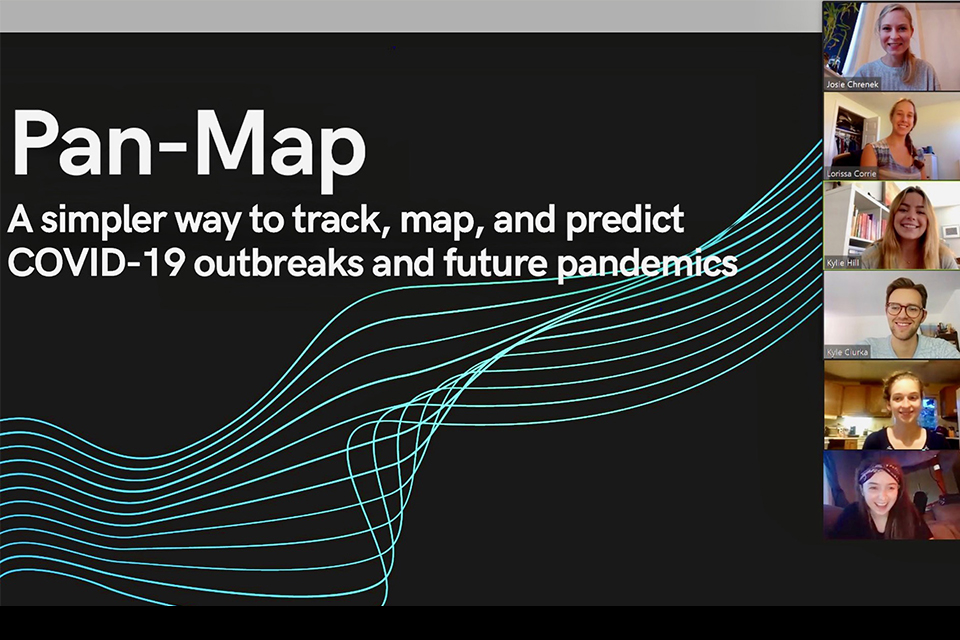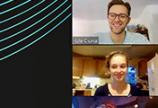UVic students shine in global COVID competition
Engineering, Social Sciences, Science
- Anne Tolson

A UVic team placed near the top of a competition that required students from around the world to devise a new way to track COVID-19.
Devising a solution for a real-life crisis
The New York Academy of Sciences is among the oldest scientific organizations in the US, with more than 20,000 members in more than 100 countries and a President's Council that includes 36 Nobel Laureates.
In spring 2020, the academy invited post-secondary students from around the world to participate as individuals or teams in the “Tracking Coronavirus Challenge,” by designing a system to predict and monitor pandemic outbreaks.
The achievement of the group of UVic students is significant: in July, only 10 finalists including the UVic team were chosen to present their solutions online to a panel of judges and 200 attendees. (First prize went to a recent grad from India.)
The UVic team’s solution – called “Pan-Map” – focuses on improving how the data from electronic health records is shared among healthcare facilities. In particular, the team proposed creating a universal database of symptom data to consolidate these records, and then applying machine learning to generate predictions of future outbreak locations.
The ultimate goal was to create a mapping platform that could visually display the outbreak predictions.
Participating in meaningful collaboration
The six UVic students on the team – Josie Chrenek and Kyle Ciurka (engineering), Lorissa Corrie, Rebecca Kirsch and Shannon Eley (science), and Kylie Hill (social sciences) – have been friends since their first year at UVic and were all living in different cities during the summer.
We decided to enter the challenge because we were all interested in gaining a better understanding of the COVID-19 outbreak. Some of us had co-ops that were cancelled or jobs that were affected by COVID-19, so this really motivated us to use the situation to begin thinking of ways to lessen these sorts of outbreaks in the future.
—Josie Chrenek, fourth-year student in biomedical engineering
The team members were excited about combining their knowledge to come up with a solution that took advantage of their different educational backgrounds and perspectives.


